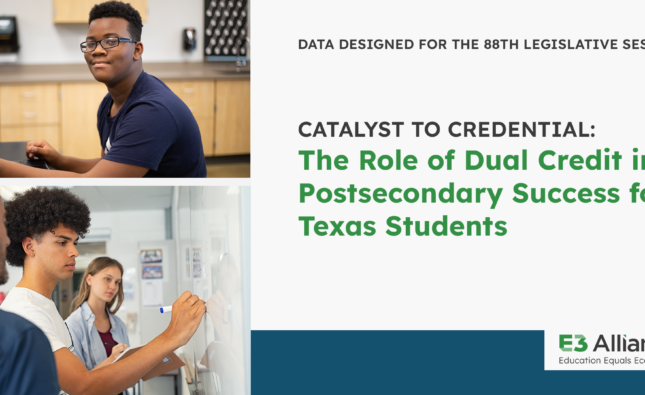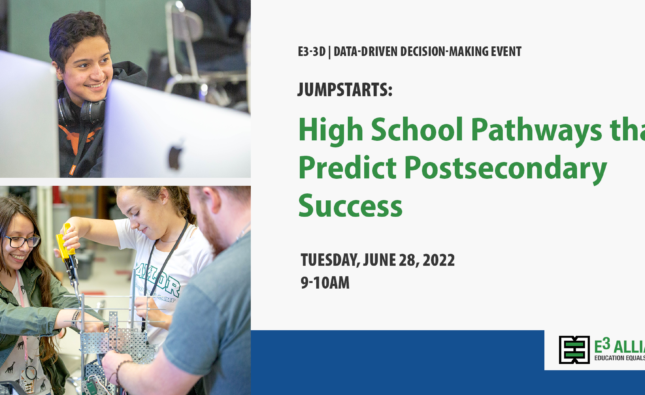Presented by Dr. Amy Wiseman, Director of Research Studies and Christine Bailie, Deputy Director of PK-16 Initiatives at E3 Alliance and Dr. Carol Fletcher, Deputy Director, Center for STEM Education at The University of Texas at Austin; Jay Barrett, Principal at AACAL – Amarillo ISD; Brandon Johnson, Principal at STEAM Middle School – Burleson ISD and Donna Ullrich, Principal at Humble High School – Humble ISD at the STEM Leadership Summit June 27, 2017.
Educators and especially our higher education leaders have been concerned that an unintended consequence of 2013’s HB 5 could be allowing students to choose a high school path with too little mathematics to be ready for post-secondary credentialing. Meanwhile, the Texas Higher Education Coordinating Board has a goal of achieving 60% of the young adult population with a higher education credential by 2030 to meet workforce needs, when currently we are at 38%.
In this presentation we explore Statewide Mathematics Analysis research conducted by E3 analyzing the relationship between the highest level of mathematics mastered by high school students and subsequent education outcomes, including: high school graduation, college enrollment, college completion, and college completion with a Science, Technology, Engineering, and Mathematics (STEM) degree.
Key research findings include: 1) Only students with at least one year of math beyond Algebra II had a realistic chance at achieving a post-secondary credential, 2) Each additional high school math course corresponded to higher postsecondary completion rates, 3) Across Texas, there is a huge opportunity gap among low-income students and their peers for taking Algebra I in middle school, 4) Almost all students who are in accelerated math pathways are successful, completing the course and passing the state assessment for Algebra I, 5) Many of our most prepared 5th grade students who meet college and career ready standards lack access to accelerated math pathways – with low-income and minority students disproportionately disadvantaged, and 6) students in the state’s most rural districts lack access to rigorous math pathways.
To view the presentation, click the link:







